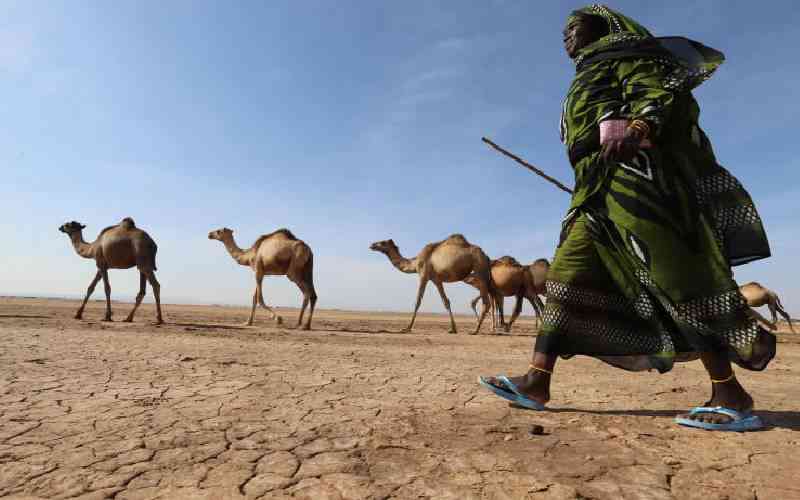×
The Standard e-Paper
Stay Informed, Even Offline

Qura Laana, a herdswoman walking her camels through Chalbi desert in North Horr, Marsabit county on January 20, 2021. [Denish Ochieng, Standard]
Living conditions and health of residents in drought-hit areas continue to deteriorate by the day and require urgent attention.